Tips On Growing And Caring For Salvia Plants
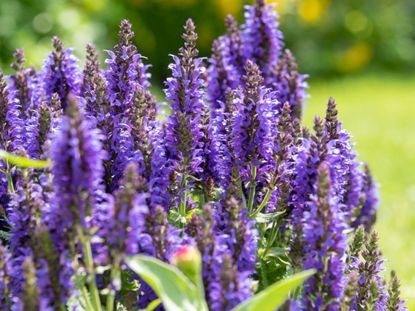

Quick Salvia Facts:
- Botanical name – Salvia spp.
- Height – 3-6 ft. (0.9-1.8 m)
- Spread – 12-48 in. (30-122 cm)
- Sun exposure – Full Sun
- Soil requirements – Slightly Acidic
- Hardiness zones - USDA Zones 5-9
- When to plant - Spring, Fall
How to Plant Salvias
Learning how to grow salvia is relatively simple, though it will require some research. The genus Salvia is actually quite large, containing hundreds of different species. Fortunately, many of these plants are similar in terms of their needs and requirements for growth.
This is especially true of salvias that are popular for use in the home landscape. While these perennials can be easily grown from seed, most gardeners choose to purchase their plants in spring from local nurseries.
Deciding when to plant salvias will depend greatly upon the region, though most find spring to be best. Salvia may also be transplanted into the garden in early fall, provided that ample time is allowed for root development before the arrival of cooler winter temperatures.
Soil & Light Requirements
Salvia plants generally prefer soils that are slightly acidic. Flower beds and borders should drain well, and receive at least six hours of sunlight each day. Though some species of salvia are able to adapt to varying amounts of sun, excess shade may lead to fewer flowers and leggier plants.
Fertilizer Needs
Rich, well-worked soils will help new plantings of salvia off to the best start possible. As salvia plants are not considered to be heavy feeders, they will require only infrequent fertilization. Experienced growers suggest feeding the plants annually, at the beginning of each spring. For the best results, a balanced slow-release granular feed can be used. Though you may be tempted to fertilize plants more frequently, excess feeding can lead to increased susceptibility to disease and loss of vigor.
How Often to Water Salvias
Though consistent moisture will aid in the production of flowers, salvia plants seldom need supplemental irrigation. In fact, surplus water is among the most common causes of issues that affect salvia. This includes various types of fungal disease, as well as root and crown rot. Allowing the garden soil to dry completely between waterings is a good rule to follow. Plants should be able to withstand brief periods of drought with little problem.
Basic Salvia Care
Provided that the plant’s requirements for growth have been met, learning how to care for salvia is straightforward. Still, there are some essential aspects of salvia care to consider. Most notable among these is its need for routine maintenance throughout the growing season. Frequent chores, like deadheading and pruning, are especially important as a means to keep up appearances within ornamental beds.
Gardening tips, videos, info and more delivered right to your inbox!
Sign up for the Gardening Know How newsletter today and receive a free download of our DIY eBook "Bring Your Garden Indoors: 13 DIY Projects For Fall And Winter".
Do You Deadhead Salvias?
Deadheading is a key aspect of salvia plant care. Each plant’s flowering period will vary depending upon the species. While some will bloom only once or twice each summer, others may persist throughout much of the growing season. Deadheading, or the removal of old flowers after they have faded, can be beneficial as a means to prolong the bloom period. After each bud has faded, stems can be carefully clipped back to the ground. This will encourage new growth, as well as help to keep the plants looking healthy and fresh.
How to Propagate Salvia
Salvia is most commonly propagated by seed. However, growers have also found success multiplying their plants through the use of division and cutting. Divide salvia every 3-4 years, after the plants have reached an adequate size. Most suggest early spring as the best time to begin digging salvia. While dormant, each plant’s root mass can be cut into smaller segments before being replanted into new beds.
Salvia is known for the ease in which cuttings will readily take root. Small stem segments can be placed directly into water, or into a moist potting medium, to begin this process. Under ideal conditions, you can expect salvia cuttings to begin taking root in as little as 2-4 weeks.
Problems, Pests, & Diseases
Though salvia plants are generally considered to be a carefree addition to the garden, they can be affected by several common diseases. Powdery mildew is a serious concern, particularly in regions that are humid. Other foliar diseases, like rust and leaf spot, may spread throughout growing beds.
Prevention and control of each of these infections will be key in maintaining salvia’s attractive appearance throughout the entirety of the growing season. Aphids, mites, whiteflies, and other insects may also be an issue; though their presence seldom leads to severe damage or loss of plants.
Salvia Varieties
- ‘Blue Bedder’ Salvia
- ‘Clary’ Series Salvia
- ‘Hummingbird’ Series Salvia
- ‘Rose Rhapsody’ Salvia
- ‘Summer Jewel’ Series Salvia

Tonya Barnett has been gardening for 13 years. Flowers are her passion. She has transformed her backyard into a cut flower garden, which she regularly chronicles on her YouTube channel http://www.youtube.com/@tonyawiththeflowers.
-
 Composting Paper: A Complete Guide To Transforming Different Types Into Garden Gold
Composting Paper: A Complete Guide To Transforming Different Types Into Garden GoldReduce waste and learn the secrets of composting paper at home with our guide to demystifying which types can enrich your garden – and which to avoid.
By Amy Grant
-
 Are Poinsettias Poisonous To Dogs? What You Need To Know To Keep Your Pooch Safe
Are Poinsettias Poisonous To Dogs? What You Need To Know To Keep Your Pooch SafeYou may adore their richly hued tones and textures, but are poinsettias poisonous to dogs? Don’t leave it to chance – we reveal how risky they are, and how to keep pets safe
By Amy Grant
-
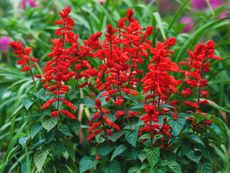 Varieties Of Salvia For Part Shade Or Shade
Varieties Of Salvia For Part Shade Or ShadeBesides being easy to grow, salvia or sage plants are versatile and some even enjoy partial shade. Read on for more.
By Laura Miller
-
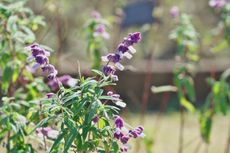 Mexican Bush Sage Care: How To Plant Mexican Bush Sage
Mexican Bush Sage Care: How To Plant Mexican Bush SageChoosing flowering plants that encourage diversity of wildlife in the garden is a key aspect of creating a lush, green garden oasis. Mexican bush sage plant is an ideal choice for those wishing to establish perennial plantings that will thrive all season long. Learn more here.
By Tonya Barnett
-
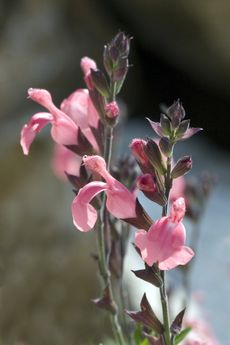 Autumn Sage Care: Growing An Autumn Sage Plant In The Garden
Autumn Sage Care: Growing An Autumn Sage Plant In The GardenSelecting perennial flowers can be one of the most difficult aspects of planting flower borders or landscapes. The autumn sage plant is a perennial that has gained popularity. Not only is this plant versatile, but it offers a season filled with flower blooms. Learn more here.
By Tonya Barnett
-
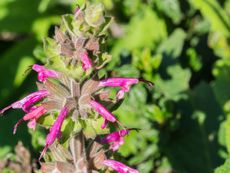 Hummingbird Sage Plant Care: Tips For Growing Hummingbird Sage Plants
Hummingbird Sage Plant Care: Tips For Growing Hummingbird Sage PlantsAs the name may suggest, the hummingbird sage plant has pitcher shaped flowers which attract hummingbirds. Click here for growing information.
By Laura Miller
-
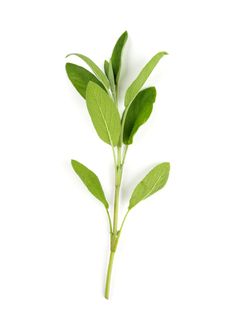 Salvia Cutting Propagation: Can You Grow Salvia From Cuttings
Salvia Cutting Propagation: Can You Grow Salvia From CuttingsIf you have salvia and want more of these easy-care beauties, nobody can blame you. Fortunately, it’s not difficult to propagate. Can you grow salvia from cuttings? Click here for information about salvia cutting propagation.
By Teo Spengler
-
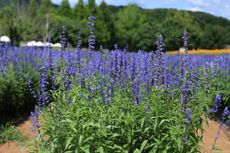 What Is Mealycup Sage: Blue Salvia Info And Growing Conditions
What Is Mealycup Sage: Blue Salvia Info And Growing ConditionsMealycup sage has stunning purple-blue flowers that attract pollinators and brighten the landscape. The name may not sound terribly pretty, but the plant also goes by the name blue salvia. Click here for some comprehensive blue salvia information.
By Bonnie L. Grant
-
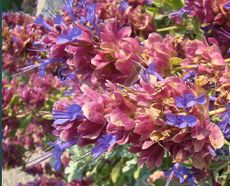 Mojave Sage Information: Learn About Mojave Sage Care In Gardens
Mojave Sage Information: Learn About Mojave Sage Care In GardensWhat is Mojave sage? Native to Southern California, Mojave sage is a woody shrub with aromatic, silvery-green foliage and spiky lavender blooms. Click on the article that follows to learn more about this vibrant, dry-climate plant.
By Mary H. Dyer
-
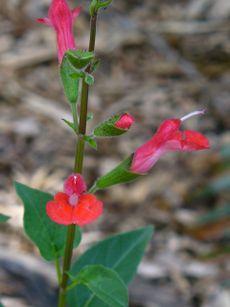 Eyelash Sage Plant Care: Tips On Growing Eyelash Sage Plants
Eyelash Sage Plant Care: Tips On Growing Eyelash Sage PlantsLooking for an easy care bloomer that attracts hummingbirds? Look no further than eyelash leaved sage. What is an eyelash sage? Click on the article that follows to find out about growing eyelash sage plants and care.
By Amy Grant